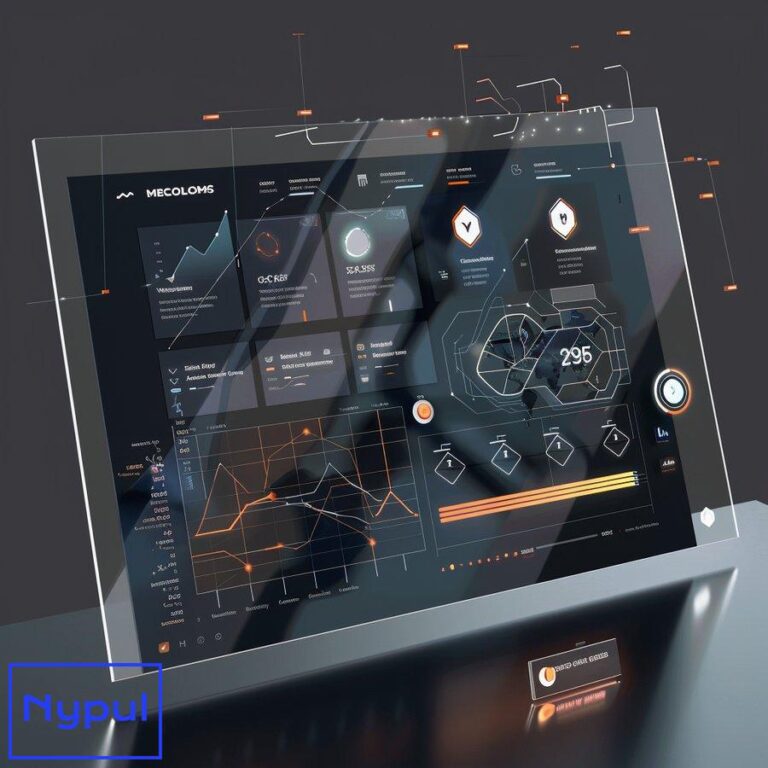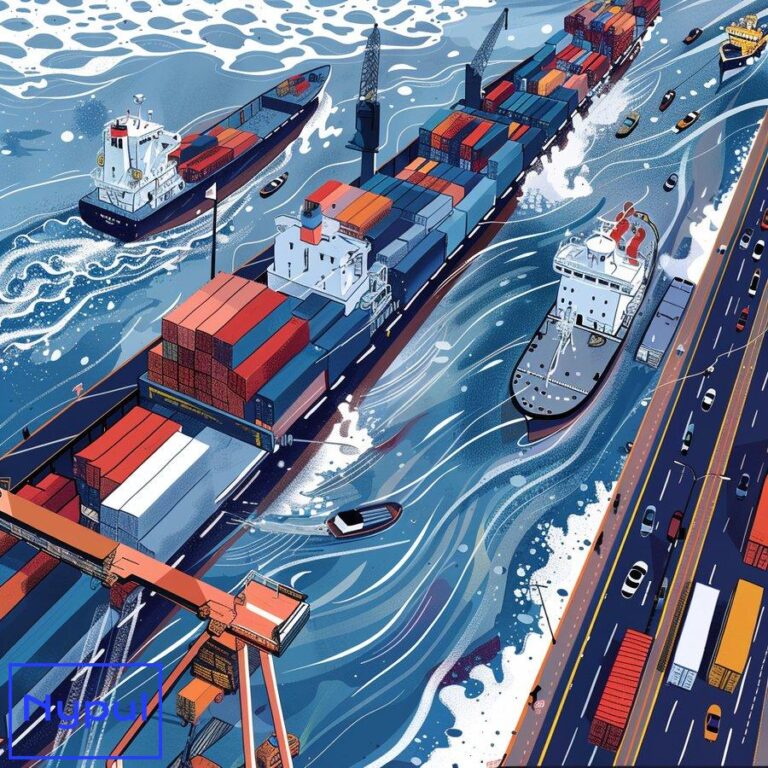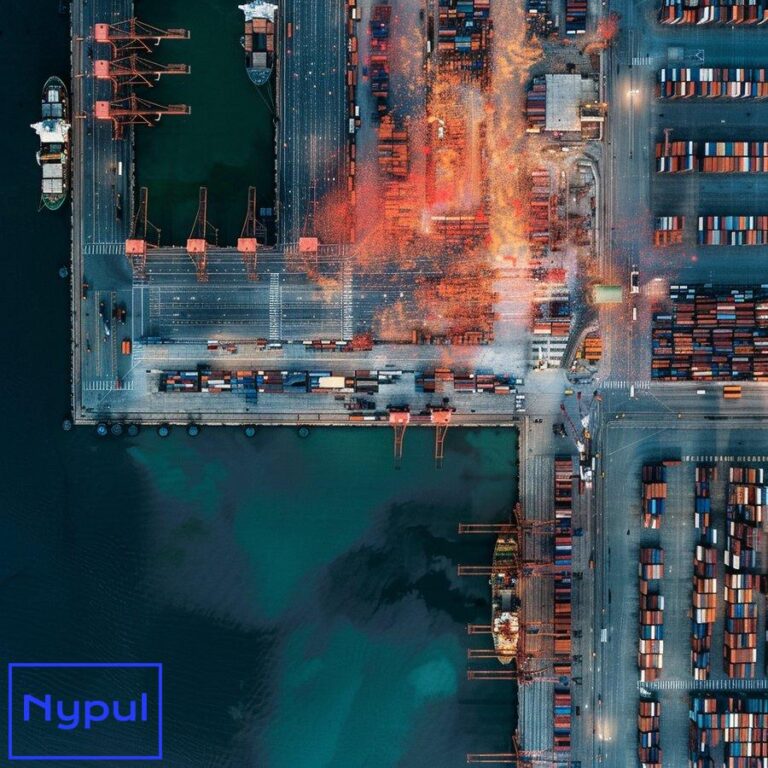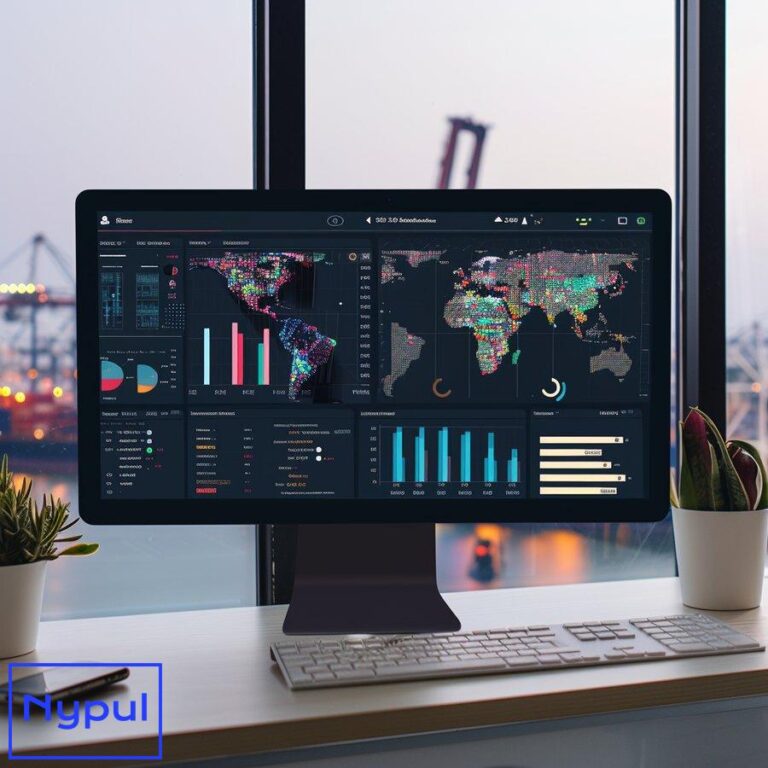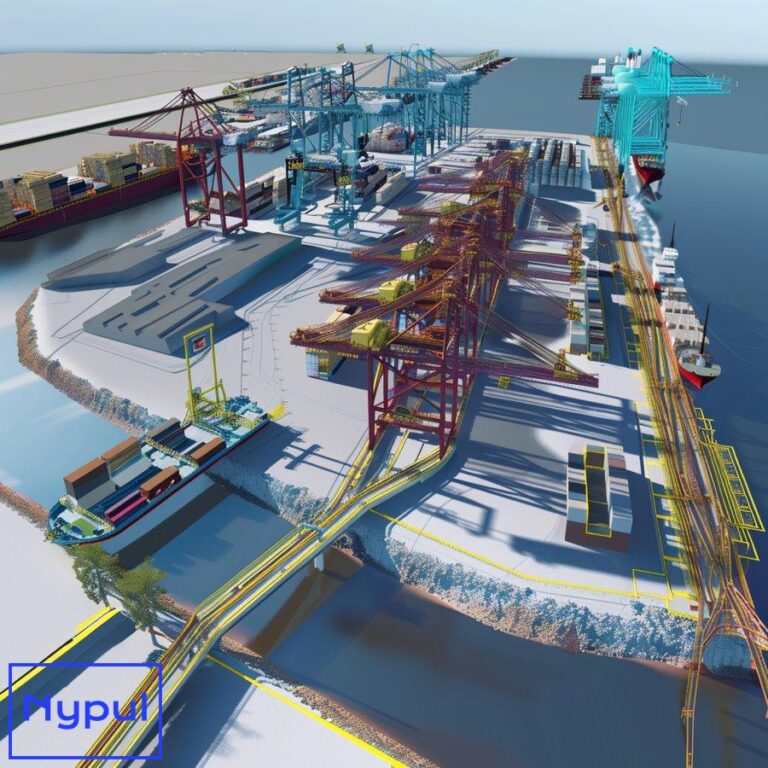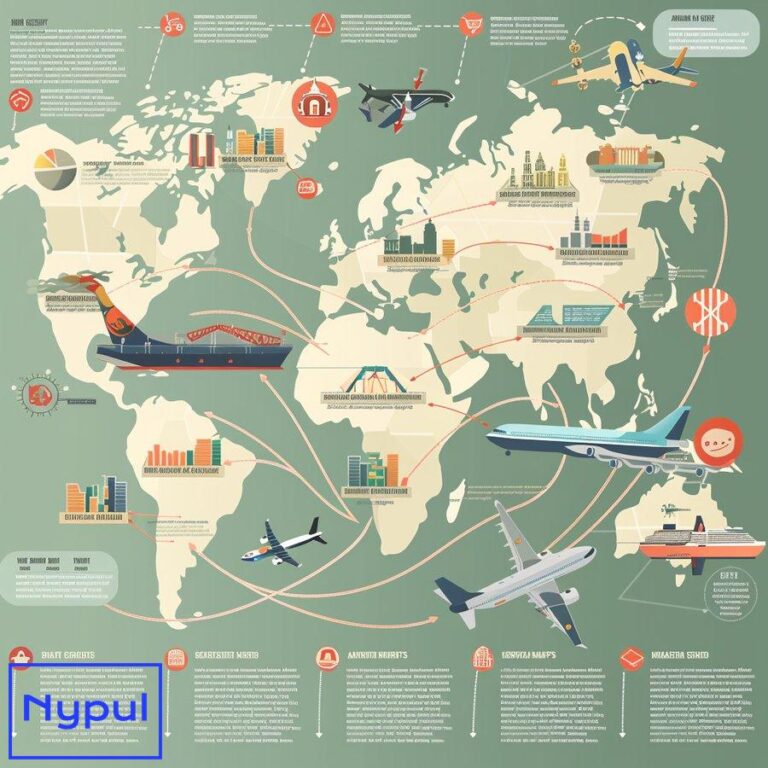What Is a PCS in Logistics
What is a Port Community System (PCS) in logistics?
A Port Community System (PCS) is a centralized digital platform that facilitates seamless information exchange and collaboration among various stakeholders in the port and logistics ecosystem. This innovative system serves as a vital link between port authorities, terminal operators, shipping lines, freight forwarders, customs agencies, and other relevant parties involved in maritime trade and transportation.
The primary purpose of a PCS is to streamline and optimize port operations by providing a single point of data entry and access for all participants. This centralization eliminates redundancies, reduces paperwork, and enhances overall efficiency in the movement of goods through ports.
Key characteristics of a Port Community System include:
Centralized Information Hub: A PCS acts as a central repository for all port-related data, enabling real-time access to crucial information for authorized users.
Standardized Communication: The system establishes a common language and format for data exchange, ensuring consistency and compatibility across different stakeholders.
Process Automation: Many routine tasks and procedures are automated within a PCS, reducing manual intervention and the potential for errors.
Enhanced Visibility: Stakeholders gain improved visibility into the status of shipments, vessel movements, and other critical operations within the port.
Regulatory Compliance: A PCS often incorporates features to ensure compliance with customs regulations, security protocols, and other relevant legal requirements.
To better understand the scope and functionality of a Port Community System, let’s examine its key components and how they interact:
| Component | Description | Interaction with Other Components |
|---|---|---|
| Data Exchange Platform | Core infrastructure for information sharing | Connects with all other components to facilitate data flow |
| Vessel Management Module | Tracks vessel arrivals, departures, and berthing | Interfaces with Terminal Operations and Customs modules |
| Cargo Tracking System | Monitors the movement of goods within the port | Integrates with Customs and Transportation modules |
| Customs Interface | Facilitates customs clearance processes | Communicates with Cargo Tracking and Document Management systems |
| Document Management | Handles electronic submission and processing of documents | Interacts with all other modules for paperless operations |
| Transportation Management | Coordinates land-side logistics operations | Links with Cargo Tracking and Terminal Operations modules |
| Billing and Payment System | Manages financial transactions related to port services | Connects with all modules generating billable activities |
The evolution of Port Community Systems can be traced back to the early 1980s when ports began digitizing their operations to cope with increasing trade volumes and complexity. Initially, these systems focused primarily on basic data exchange between a limited number of port stakeholders. However, as technology advanced and global trade expanded, PCS platforms evolved to become more comprehensive and sophisticated.
Today’s modern Port Community Systems leverage cutting-edge technologies such as cloud computing, artificial intelligence, and blockchain to provide enhanced functionality and security. These advancements have transformed PCSs from simple data exchange platforms to intelligent ecosystems capable of predictive analytics, real-time decision support, and seamless integration with global supply chain networks.
The adoption of Port Community Systems has become increasingly crucial in the face of growing challenges in the maritime industry, including:
Rising Trade Volumes: As global trade continues to expand, ports face pressure to handle larger volumes of cargo efficiently.
Regulatory Complexity: Increasing regulations and security requirements demand more sophisticated systems for compliance management.
Environmental Concerns: The need for sustainable port operations necessitates better coordination and optimization of resources.
Competitive Pressures: Ports must continually improve their efficiency and service quality to remain competitive in the global market.
By addressing these challenges, Port Community Systems play a pivotal role in modernizing port operations and facilitating smoother international trade. As we delve deeper into the subsequent sections, we will explore how PCSs function within the broader logistics ecosystem, their key components, benefits, and implementation strategies.
How does a PCS function within the logistics ecosystem?
A Port Community System (PCS) serves as a crucial nerve center within the complex logistics ecosystem, orchestrating the flow of information and facilitating seamless coordination among various stakeholders. To understand its functioning, we must first examine the intricate web of relationships and processes that make up the port logistics environment.

The logistics ecosystem surrounding a port encompasses a wide range of entities, including:
Port Authorities: Responsible for overall port management and development.
Terminal Operators: Manage the physical handling of cargo within the port.
Shipping Lines: Operate vessels and coordinate maritime transportation.
Freight Forwarders: Arrange the movement of goods on behalf of shippers.
Customs Agencies: Enforce regulations and collect duties on imported goods.
Trucking Companies: Provide land transportation for cargo to and from the port.
Rail Operators: Facilitate inland transportation of goods via rail networks.
Shippers and Consignees: The originators and recipients of cargo shipments.
Within this ecosystem, the PCS functions as an integrator, facilitator, and optimizer. Here’s a detailed look at how a PCS operates within this complex environment:
Information Integration
The PCS acts as a central hub for data collection and dissemination. It receives information from various sources, including:
- Vessel arrival and departure schedules from shipping lines
- Cargo manifests and bills of lading from freight forwarders
- Container status updates from terminal operators
- Customs declarations from brokers and agents
- Truck appointment details from drayage companies
This information is then processed, standardized, and made available to relevant stakeholders based on their roles and access privileges. The PCS ensures that all parties have access to the most up-to-date and accurate information, reducing discrepancies and improving decision-making.
Process Orchestration
Beyond simple data exchange, a PCS actively coordinates and optimizes various processes within the port ecosystem:
Vessel Berthing: The system helps optimize berth allocation by considering factors such as vessel size, cargo type, and terminal capacity.
Cargo Handling: It coordinates the movement of cargo between ships, yards, and inland transportation modes, minimizing delays and maximizing efficiency.
Customs Clearance: The PCS facilitates the electronic submission of customs declarations and coordinates inspections, streamlining the clearance process.
Truck Appointments: Many PCSs include modules for managing truck appointments, reducing congestion at terminal gates and improving turnaround times.
Documentation Management: The system enables the electronic exchange of various documents, including bills of lading, certificates of origin, and phytosanitary certificates.
To illustrate the intricate flow of information and processes within a PCS, consider the following table outlining a typical import container journey:
| Stage | Process | PCS Function |
|---|---|---|
| Pre-arrival | Vessel schedule and manifest submission | Collects and distributes information to relevant parties |
| Vessel Arrival | Berth allocation and pilot coordination | Optimizes berth assignment based on multiple factors |
| Container Discharge | Terminal operations planning | Facilitates data exchange between shipping line and terminal |
| Customs Clearance | Declaration submission and processing | Interfaces with customs systems for efficient clearance |
| Container Release | Payment of port charges and release order issuance | Manages financial transactions and document flow |
| Gate Out | Truck appointment and container pickup | Coordinates terminal and trucking operations |
Stakeholder Collaboration
A key function of the PCS is to foster collaboration among various stakeholders:
Information Sharing: The system provides a secure platform for sharing sensitive information, such as cargo details and customs status, while maintaining data privacy and security.
Exception Management: When issues arise, such as cargo discrepancies or customs holds, the PCS facilitates rapid communication and resolution among affected parties.
Performance Monitoring: Many PCSs include dashboards and reporting tools that allow stakeholders to track key performance indicators (KPIs) and identify areas for improvement.
Community Building: Some advanced PCSs incorporate features like discussion forums or collaborative workspaces, enabling stakeholders to engage in dialogue and share best practices.
Integration with External Systems
A modern PCS doesn’t operate in isolation but integrates with various external systems to create a seamless flow of information:
National Single Windows: In many countries, PCSs interface with national single window systems that serve as a single point of contact for trade-related regulatory requirements.
Global Tracking Systems: Integration with global container tracking platforms allows for end-to-end visibility of cargo movements.
Inland Port Systems: For ports with significant hinterland connections, PCSs often integrate with inland port or dry port systems to coordinate multimodal transportation.
Blockchain Networks: Some cutting-edge PCSs are exploring integration with blockchain-based platforms to enhance transparency and traceability in global supply chains.
Adaptive and Evolving Role
As the logistics ecosystem continues to evolve, so does the role of the PCS:
Big Data Analytics: Advanced PCSs are incorporating big data analytics capabilities to provide predictive insights and support strategic decision-making.
Internet of Things (IoT) Integration: The integration of IoT devices, such as smart containers and environmental sensors, is enhancing real-time tracking and monitoring capabilities.
Artificial Intelligence: AI-powered modules within PCSs are being developed to optimize various processes, from berth allocation to predictive maintenance of port equipment.
By functioning as a central nervous system within the logistics ecosystem, a Port Community System not only streamlines operations but also drives innovation and continuous improvement in port efficiency. As we continue to explore the intricacies of PCSs, we’ll delve into the specific components that make up these sophisticated systems and the benefits they bring to the maritime and logistics industries.
What are the key components of a modern PCS?
A modern Port Community System (PCS) is a sophisticated platform comprising several interconnected components, each designed to address specific aspects of port and logistics operations. These components work in harmony to create a seamless, efficient, and transparent environment for all stakeholders involved in the maritime supply chain. Let’s explore the key components that form the backbone of a state-of-the-art PCS:
Core Integration Platform
At the heart of every PCS lies the core integration platform, which serves as the foundation for all other components. This platform is responsible for:
Data Standardization: Ensures that information from various sources is converted into a common format for easy processing and exchange.
Message Routing: Directs data flows between different stakeholders and system components based on predefined rules and permissions.
API Management: Manages the application programming interfaces (APIs) that allow external systems to connect and interact with the PCS.
Security and Access Control: Implements robust security measures to protect sensitive data and manage user access rights.
Vessel Management Module
This component focuses on all aspects related to vessel operations within the port:
Vessel Scheduling: Manages the arrival and departure schedules of ships, including updates and changes.
Berth Management: Optimizes berth allocation based on vessel characteristics, cargo type, and port capacity.
Port Services Coordination: Facilitates the booking and coordination of various port services such as pilotage, towage, and bunkering.
Cargo and Container Tracking System
This module provides end-to-end visibility of cargo movements:
Container Status Tracking: Monitors the location and status of containers from vessel discharge to final delivery.
Cargo Manifest Management: Handles the electronic submission and processing of cargo manifests.
Dangerous Goods Monitoring: Ensures proper tracking and handling of hazardous materials.
Customs and Regulatory Compliance Module
This component streamlines interactions with customs and other regulatory bodies:
Electronic Customs Declarations: Facilitates the submission and processing of customs declarations.
Risk Assessment: Integrates with customs risk management systems to expedite clearance for low-risk shipments.
Regulatory Document Management: Handles various certificates and permits required for international trade.
Terminal Operating System (TOS) Interface
While not typically a part of the PCS itself, a robust interface with terminal operating systems is crucial:
Real-time Data Exchange: Enables seamless information flow between the PCS and individual terminal systems.
Equipment and Resource Allocation: Coordinates the allocation of terminal resources based on vessel and cargo information.
Yard Planning Integration: Aligns yard operations with overall port logistics planning.
Transportation and Hinterland Connectivity Module
This component manages the crucial link between maritime and inland transportation:
Truck Appointment System: Coordinates the arrival of trucks for container pickup and delivery.
Rail Integration: Manages the interface with rail operations for efficient cargo transfer.
Inland Waterway Connections: Facilitates coordination with barge and river transport systems where applicable.
Financial and Billing System
This module handles the financial aspects of port operations:
Automated Invoicing: Generates invoices for various port services based on actual operations.
Payment Gateway Integration: Provides secure online payment options for port users.
Financial Reporting: Offers comprehensive financial reporting and analysis tools.
Business Intelligence and Analytics Platform
Modern PCSs incorporate advanced analytics capabilities:
Performance Dashboards: Provides real-time visibility into key performance indicators (KPIs) for various port operations.
Predictive Analytics: Utilizes historical data and machine learning algorithms to forecast trends and potential issues.
Scenario Planning Tools: Allows stakeholders to model different operational scenarios and their potential impacts.
Community Collaboration Portal
This component fosters communication and collaboration among port community members:
News and Announcements: Keeps stakeholders informed about important updates and changes.
Discussion Forums: Provides a platform for community members to share insights and best practices.
Document Sharing: Facilitates the secure sharing of non-transactional documents and resources.
Mobile and IoT Integration Layer
As technology evolves, this component is becoming increasingly important:
Mobile App Support: Enables access to key PCS functions through mobile devices.
IoT Device Integration: Incorporates data from various Internet of Things (IoT) devices such as smart containers, environmental sensors, and automated guided vehicles (AGVs).
Blockchain Integration Module
While still emerging, some advanced PCSs are incorporating blockchain technology:
Smart Contracts: Implements blockchain-based smart contracts for automated execution of agreed-upon terms.
Supply Chain Traceability: Enhances the transparency and traceability of goods throughout the supply chain.
Secure Document Exchange: Utilizes blockchain for tamper-proof exchange of critical documents.
To illustrate how these components interact within a modern PCS, consider the following table outlining a typical import container process:
| Process Stage | Primary PCS Components Involved | Key Functions |
|---|---|---|
| Pre-arrival | Vessel Management, Customs Module | Schedule vessel arrival, Submit advance cargo information |
| Vessel Arrival | Vessel Management, TOS Interface | Optimize berth allocation, Plan container discharge |
| Container Discharge | TOS Interface, Cargo Tracking | Update container status, Initiate customs process |
| Customs Clearance | Customs Module, Financial System | Process declaration, Calculate and collect duties |
| Container Release | Financial System, Transportation Module | Generate release order, Schedule truck appointment |
| Gate Out | Transportation Module, Cargo Tracking | Validate truck appointment, Update container status |
| Performance Analysis | Business Intelligence Platform | Generate KPI reports, Identify improvement areas |
The seamless integration of these components creates a powerful ecosystem that drives efficiency, transparency, and collaboration within the port community. As technology continues to advance, we can expect these components to evolve, incorporating new capabilities such as artificial intelligence, advanced robotics, and enhanced cybersecurity measures.
By understanding the key components of a modern PCS, port authorities and logistics providers can make informed decisions when implementing or upgrading their systems, ensuring they leverage the full potential of these sophisticated platforms to enhance their competitive edge in the global maritime industry.
Why is implementing a PCS beneficial for ports and logistics providers?
Implementing a Port Community System (PCS) offers a multitude of benefits for ports and logistics providers, transforming traditional operations into streamlined, data-driven processes. These benefits extend beyond mere efficiency gains, encompassing economic, environmental, and strategic advantages that position ports and their stakeholders for long-term success in the competitive global maritime industry.
Operational Efficiency

The primary benefit of a PCS is the significant improvement in operational efficiency:
Reduced Turnaround Times: By optimizing vessel berthing, cargo handling, and customs clearance processes, a PCS can dramatically reduce the time ships spend in port. This increased efficiency allows ports to handle more vessels and cargo with existing infrastructure.
Streamlined Documentation: The digitization and centralization of documentation processes eliminate redundant data entry, reduce errors, and speed up administrative tasks. This streamlining can cut document processing times by up to 70%.
Enhanced Resource Utilization: Through better planning and coordination, a PCS enables more efficient use of port resources, including berths, cranes, and storage areas. This optimization can increase overall port capacity without significant physical expansion.
Cost Reduction
Implementing a PCS leads to substantial cost savings for both ports and logistics providers:
Lower Administrative Costs: By automating many manual processes, a PCS reduces the need for extensive administrative staff, cutting labor costs.
Reduced Inventory Holding Costs: Faster cargo clearance and improved visibility allow shippers to reduce buffer stocks and associated inventory holding costs.
Minimized Demurrage and Detention Charges: Better coordination and faster processing help avoid costly demurrage and detention fees for containers and vessels.
Improved Revenue Generation
A PCS can also contribute to increased revenue streams:
Increased Throughput: The efficiency gains from a PCS allow ports to handle more cargo, potentially increasing revenueImproved Revenue Generation
A PCS can also contribute to increased revenue streams:
Increased Throughput: The efficiency gains from a PCS allow ports to handle more cargo, potentially increasing revenue from port fees and services.
Attracting New Business: Ports that implement a PCS can enhance their reputation for reliability and efficiency, attracting new shipping lines and logistics providers looking for competitive advantages.
Value-Added Services: With improved data analytics capabilities, ports can offer value-added services such as real-time tracking, predictive maintenance, and enhanced customer support, generating additional revenue.
Enhanced Visibility and Transparency
A PCS fosters greater visibility and transparency throughout the logistics chain:
Real-time Tracking: Stakeholders can access real-time information about cargo status, vessel movements, and port operations, enabling better decision-making and proactive issue resolution.
Data Sharing: The centralized nature of a PCS allows for secure data sharing among all participants, enhancing trust and collaboration within the port community.
Regulatory Compliance: A PCS simplifies compliance with customs and regulatory requirements by providing automated reporting tools and ensuring that all stakeholders are informed of changing regulations.
Environmental Sustainability
Implementing a PCS can contribute to more sustainable port operations:
Reduced Emissions: By optimizing vessel berthing and cargo handling, a PCS can decrease the time vessels spend idling in port, leading to lower emissions.
Resource Optimization: Efficient resource management reduces waste and promotes sustainable practices, such as minimizing energy consumption and maximizing the use of renewable resources.
Sustainability Reporting: Many PCSs include features for tracking environmental performance metrics, helping ports demonstrate their commitment to sustainability to stakeholders and regulatory bodies.
Strategic Advantage
A PCS provides ports and logistics providers with a strategic advantage in a highly competitive market:
Adaptability and Resilience: The data-driven insights provided by a PCS enable ports to quickly adapt to changing market conditions, such as fluctuations in trade volumes or shifts in shipping routes.
Collaboration Opportunities: A PCS fosters collaboration among stakeholders, creating opportunities for joint ventures, partnerships, and shared investments in infrastructure and technology.
Future-Proofing Operations: By adopting advanced technologies and data analytics capabilities, ports can future-proof their operations against emerging challenges, such as digital disruptions and evolving customer expectations.
In summary, the implementation of a Port Community System offers a wide range of benefits that enhance operational efficiency, reduce costs, improve revenue generation, and promote sustainability. These advantages position ports and logistics providers to thrive in an increasingly complex and competitive global marketplace.
How does a PCS differ from other logistics management systems?
A Port Community System (PCS) is distinct from other logistics management systems in several key ways, primarily due to its specific focus on port operations and the unique requirements of maritime logistics. Understanding these differences is crucial for stakeholders considering the adoption of a PCS or evaluating its role within their broader logistics strategy.
Focus on Port Operations
Unlike general logistics management systems, which may cover a wide range of supply chain activities, a PCS is specifically designed to address the complexities of port operations. This focus encompasses:
Vessel Management: A PCS includes specialized modules for managing vessel schedules, berthing assignments, and port services, which are not typically found in standard logistics systems.
Cargo Handling: The PCS is tailored to optimize cargo handling processes within the port, including container tracking, yard management, and customs clearance, ensuring that all port stakeholders have access to real-time data.
Regulatory Compliance: A PCS is equipped to handle the specific regulatory requirements associated with maritime trade, including customs declarations, dangerous goods management, and environmental regulations.
Stakeholder Collaboration
A PCS emphasizes collaboration among a diverse range of stakeholders involved in port operations:
Community Engagement: The PCS serves as a centralized platform for all port community members, including port authorities, shipping lines, freight forwarders, customs agencies, and terminal operators, facilitating communication and coordination.
Data Sharing: Unlike traditional logistics systems that may operate in silos, a PCS promotes secure data sharing among stakeholders, enhancing transparency and trust within the port community.
Integrated Workflows: The PCS enables integrated workflows that connect various stakeholders’ processes, allowing for smoother transitions between different stages of cargo movement and minimizing delays.
Real-Time Information Access
A key differentiator of a PCS is its emphasis on real-time information access:
Live Updates: Stakeholders can access live updates on vessel movements, cargo status, and port operations, enabling proactive decision-making and rapid response to issues.
Performance Monitoring: Many PCSs include dashboards and analytics tools that provide real-time visibility into key performance indicators (KPIs), helping stakeholders monitor operations and identify areas for improvement.
Predictive Analytics: Advanced PCSs leverage data analytics to provide predictive insights, allowing stakeholders to anticipate potential disruptions and optimize their operations accordingly.
Integration with External Systems
While logistics management systems often focus on internal processes, a PCS is designed to integrate seamlessly with external systems:
National Single Windows: Many PCSs interface with national single window systems, facilitating compliance with regulatory requirements and streamlining customs processes.
Global Tracking Platforms: Integration with global container tracking systems enhances end-to-end visibility and allows stakeholders to monitor cargo movements beyond the port.
Inland Transportation Systems: A PCS often connects with inland transportation management systems, ensuring coordinated logistics from the port to the final destination.
Technological Advancements
A PCS typically incorporates advanced technologies that may not be present in traditional logistics management systems:
IoT Integration: Many modern PCSs leverage IoT devices for real-time tracking and monitoring of cargo conditions, enhancing visibility and security.
Blockchain Applications: Some advanced PCSs are exploring blockchain technology for secure and transparent data sharing, particularly for sensitive documents and transactions.
Artificial Intelligence: AI-driven analytics and decision support tools are increasingly being integrated into PCSs to optimize operations and improve efficiency.
In summary, while both Port Community Systems and traditional logistics management systems aim to enhance supply chain efficiency, a PCS is uniquely tailored to the specific needs of port operations and maritime logistics. Its focus on stakeholder collaboration, real-time information access, and integration with external systems distinguishes it as a vital tool for modern port management.
What challenges do organizations face when implementing a PCS?
Implementing a Port Community System (PCS) can bring significant benefits to ports and logistics providers, but it also presents a range of challenges that organizations must navigate to ensure successful adoption. Understanding these challenges is crucial for stakeholders considering a PCS implementation, as it allows them to proactively address potential obstacles and develop effective strategies for overcoming them.

Stakeholder Resistance
One of the most common challenges organizations face is resistance from stakeholders:
Cultural Barriers: Different stakeholders may have established ways of working, and transitioning to a centralized system can be met with skepticism or reluctance to change.
Lack of Engagement: If stakeholders do not feel involved in the implementation process, they may be less likely to adopt the new system or utilize its features effectively.
Training and Support Needs: Ensuring that all users are adequately trained and supported during the transition is critical. A lack of training can lead to misunderstandings and underutilization of the system.
Data Integration Issues
Integrating existing data into a new PCS can pose significant challenges:
Data Quality: Inconsistent or outdated data from legacy systems can hinder the successful migration of information to the new platform.
Interoperability: Ensuring that the PCS can seamlessly integrate with existing systems and platforms used by various stakeholders is essential for smooth operations.
Complexity of Data Formats: Different stakeholders may use varying data formats, making standardization a challenging task that requires careful planning and execution.
Cost Considerations
The financial implications of implementing a PCS can be daunting for organizations:
Initial Investment: The costs associated with purchasing, customizing, and deploying a PCS can be significant, especially for smaller ports or logistics providers.
Ongoing Maintenance Costs: Beyond the initial investment, organizations must also consider ongoing maintenance, support, and upgrade costs associated with the system.
Return on Investment (ROI) Uncertainty: Quantifying the ROI of a PCS can be challenging, particularly in the early stages when benefits may not be immediately apparent.
Regulatory Compliance Challenges
Navigating the regulatory landscape can complicate PCS implementation:
Evolving Regulations: Ports must stay abreast of changing customs and trade regulations, which can impact the design and functionality of the PCS.
Compliance Complexity: Ensuring that the PCS meets all regulatory requirements and facilitates compliance for all stakeholders can be a complex undertaking.
Security Concerns
Data security is a critical consideration when implementing a PCS:
Cybersecurity Risks: The centralized nature of a PCS makes it a potential target for cyberattacks, necessitating robust security measures to protect sensitive information.
Data Privacy: Organizations must ensure compliance with data privacy regulations and protect stakeholder information from unauthorized access.
Technology Adoption and Change Management
The successful implementation of a PCS requires effective change management strategies:
Technology Adaptation: Stakeholders may struggle to adapt to new technologies, particularly if they are accustomed to traditional methods of operation.
Change Fatigue: Frequent changes in technology or processes can lead to change fatigue among staff, reducing engagement and productivity.
Project Management Challenges
Implementing a PCS is a complex project that requires careful management:
Scope Creep: As stakeholders identify additional features or requirements during the implementation process, projects can expand beyond their original scope, leading to delays and increased costs.
Timeline Management: Establishing realistic timelines for implementation and ensuring that all stakeholders adhere to them can be challenging.
Vendor Management: Coordinating with technology vendors and ensuring they meet project milestones and deliverables is crucial for successful implementation.
In conclusion, while implementing a Port Community System can yield significant benefits, organizations must be prepared to address a variety of challenges. By understanding these potential obstacles and developing comprehensive strategies for stakeholder engagement, data integration, cost management, regulatory compliance, security, change management, and project oversight, ports and logistics providers can enhance their chances of a successful PCS implementation.
How can ports and logistics providers successfully implement a PCS?
Successfully implementing a Port Community System (PCS) requires careful planning, stakeholder engagement, and a focus on continuous improvement. By following a structured approach and addressing the challenges associated with PCS adoption, ports and logistics providers can maximize the benefits of the system and enhance their operational efficiency. Here are key strategies for successful PCS implementation:
Stakeholder Engagement and Collaboration
Engaging stakeholders from the outset is critical for fostering buy-in and ensuring successful adoption:
Establish a Steering Committee: Form a dedicated steering committee that includes representatives from all key stakeholders, such as port authorities, shipping lines, terminal operators, customs agencies, and freight forwarders. This committee can guide the implementation process, address concerns, and facilitate communication.
Conduct Workshops and Training: Organize workshops and training sessions to educate stakeholders about the benefits of the PCS and provide hands-on training in its use. This approach can help alleviate resistance and build confidence in the new system.
Gather Feedback: Create channels for stakeholders to provide feedback throughout the implementation process. Incorporating their insights can lead to a more user-friendly and effective system.
Comprehensive Planning and Roadmap Development
A well-defined implementation plan is essential for guiding the process:
Conduct a Needs Assessment: Assess the specific needs and requirements of all stakeholders to ensure that the PCS is tailored to address their unique challenges and objectives.
Develop a Detailed Roadmap: Create a roadmap that outlines key milestones, timelines, and responsibilities for the implementation process. This roadmap should include phases for data migration, system testing, training, and go-live.
Risk Management: Identify potential risks associated with the implementation process and develop mitigation strategies to address them proactively.
Data Management and Integration
Effective data management is crucial for a successful PCS implementation:
Data Quality Assessment: Evaluate the quality of existing data and identify any inconsistencies or gaps that need to be addressed before migration.
Standardization of Data Formats: Work with stakeholders to establish standardized data formats and protocols for data exchange, ensuring compatibility across the PCS.
Seamless Integration with Existing Systems: Ensure that the PCS can integrate with existing systems used by stakeholders, such as terminal operating systems, customs platforms, and transportation management systems.
Iterative Testing and Feedback Loops
Testing the system before full deployment is essential for identifying issues and ensuring functionality:
Conduct Pilot Testing: Implement a pilot phase where a limited number of stakeholders use the PCS in a controlled environment. This approach allows for real-world testing and helps identify any necessary adjustments.
Gather User Feedback: Solicit feedback from pilot users to identify pain points and areas for improvement. Use this feedback to refine the system before full-scale deployment.
Continuous Improvement
A commitment to continuous improvement is vital for maximizing the benefits of the PCS:
Monitor Key Performance Indicators (KPIs): Establish KPIs to measure the effectiveness of the PCS in achieving operational goals. Regularly review these metrics to identify trends and areas for enhancement.
Encourage Ongoing Training: Provide ongoing training and support to stakeholders to ensure they remain proficient in using the PCS and are aware of any new features or updates.
Adapt to Changing Needs: Stay responsive to the evolving needs of stakeholders and the logistics environment. Regularly assess the system’s performance and make necessary updates or enhancements.
Leverage Technology and Innovation
Embrace technology to enhance the capabilities of the PCS:
Incorporate Advanced Technologies: Explore opportunities to integrate advanced technologies such as artificial intelligence, machine learning, and IoT to improve data analytics, predictive modeling, and real-time monitoring.
Stay Abreast of Industry Trends: Keep informed about emerging trends and best practices in port logistics and technology to ensure that the PCS remains competitive and effective.
Foster a Culture of Collaboration
Creating a collaborative culture among stakeholders is essential for long-term success:
Promote Open Communication: Encourage open lines of communication among stakeholders to facilitate information sharing and collaboration.
Build Trust: Foster trust among stakeholders by ensuring transparency in decision-making processes and sharing the benefits of the PCS with all participants.
Celebrate Successes: Recognize and celebrate milestones and successes achieved through the PCS implementation. This recognition can motivate stakeholders and reinforce their commitment to the system.
By adopting these strategies, ports and logistics providers can successfully implement a Port Community System that enhances operational efficiency, improves stakeholder collaboration, and positions them for success in the competitive maritime industry.
What real-world examples demonstrate the impact of PCS on port efficiency?
Real-world examples of successful Port Community System (PCS) implementations highlight the transformative impact these systems can have on port efficiency, operational performance, and stakeholder collaboration. Here are several notable case studies that illustrate the benefits of PCS in action:

Port of Rotterdam, Netherlands
The Port of Rotterdam is one of the largest and busiest ports in Europe, and its PCS, known as Portbase, has significantly enhanced operational efficiency:
Improved Data Sharing: Portbase facilitates real-time data sharing among stakeholders, including shipping lines, terminal operators, and customs authorities. This integration has reduced waiting times for vessels and improved cargo handling efficiency.
Reduced Turnaround Times: By optimizing vessel berthing and cargo operations, the Port of Rotterdam has achieved a reduction in average vessel turnaround times by up to 20%, allowing the port to handle more traffic without expanding infrastructure.
Enhanced Customs Clearance: The PCS has streamlined customs processes, enabling faster clearance of goods and reducing delays associated with documentation errors.
Port of Hamburg, Germany
The Port of Hamburg has implemented a comprehensive PCS known as “Hafen Hamburg,” which has transformed its operations:
Real-time Tracking: The PCS provides stakeholders with real-time tracking of cargo and vessel movements, enhancing visibility and enabling proactive decision-making.
Optimized Resource Allocation: The system allows for better coordination of terminal resources, leading to improved crane utilization rates and reduced congestion at container terminals.
Collaboration with Inland Transport: The PCS integrates with inland transport systems, facilitating seamless coordination between maritime and land-based logistics, which has improved overall supply chain efficiency.
Port of Valencia, Spain
The Port of Valencia has adopted a PCS called “Valencia Port Community System,” which has yielded significant benefits:
Paperless Operations: The PCS has enabled the transition to paperless operations, reducing the time required for document processing and minimizing errors associated with manual data entry.
Enhanced Stakeholder Collaboration: The system fosters collaboration among various stakeholders, including shipping lines, customs, and logistics providers, leading to improved communication and coordination.
Increased Competitiveness: The efficiencies gained through the PCS have positioned the Port of Valencia as a competitive player in the Mediterranean region, attracting more shipping lines and increasing cargo volumes.
Port of Singapore
The Port of Singapore, one of the busiest ports in the world, has implemented a sophisticated PCS known as “PortNet”:
Integrated Port Operations: PortNet integrates various port operations, including vessel scheduling, cargo tracking, and customs clearance, into a single platform, enhancing overall efficiency.
Real-time Information Access: Stakeholders have access to real-time information regarding vessel arrivals, cargo status, and port services, enabling better planning and coordination.
Sustainability Initiatives: The PCS supports sustainability initiatives by optimizing resource usage and reducing emissions associated with port operations.
Port of Los Angeles, USA
The Port of Los Angeles, a key gateway for trade with Asia, has implemented a PCS that has significantly improved its operational efficiency:
Data-Driven Decision Making: The PCS provides stakeholders with access to data analytics tools that help identify trends, optimize operations, and enhance decision-making.
Reduced Truck Turnaround Times: By implementing a truck appointment system through the PCS, the port has reduced truck turnaround times by over 30%, alleviating congestion and improving service levels.
Collaboration with Supply Chain Partners: The PCS fosters collaboration among various supply chain partners, including shipping lines, freight forwarders, and customs, leading to improved overall efficiency.
These real-world examples demonstrate the profound impact that Port Community Systems can have on port efficiency, stakeholder collaboration, and overall operational performance. By leveraging technology and data-driven insights, ports around the world are transforming their operations and positioning themselves for success in an increasingly competitive global maritime landscape.

